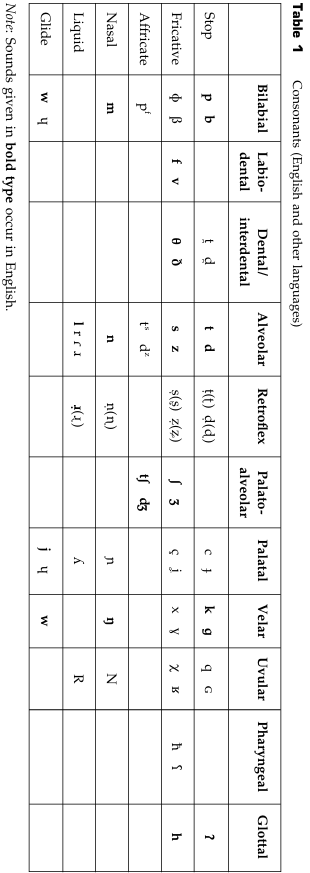


 Grammar
Grammar
 Tenses
Tenses
 Present
Present
 Past
Past
 Future
Future
 Parts Of Speech
Parts Of Speech
 Nouns
Nouns
 Verbs
Verbs
 Adverbs
Adverbs
 Adjectives
Adjectives
 Pronouns
Pronouns
 Pre Position
Pre Position
 Preposition by function
Preposition by function 
 Preposition by construction
Preposition by construction
 Conjunctions
Conjunctions
 Interjections
Interjections
 Grammar Rules
Grammar Rules
 Linguistics
Linguistics
 Semantics
Semantics
 Pragmatics
Pragmatics
 Reading Comprehension
Reading Comprehension|
Read More
Date: 2024-02-10
Date: 2024-06-18
Date: 16-3-2022
|
Secondary articulations
In the production of some consonant sounds, we observe the addition of a secondary, lesser constriction to the primary articulation. The distinct sound that is superimposed on the original creates the secondary articulation. Four types of secondary articulation are common: labialization, palatalization, velarization, and pharyngealization.

● Labialization: This term refers to the addition of lip rounding, resulting in the rounded vowel quality of the type seen in boot. An example of a labialized consonant is found in the initial sound of quick. The diacritic for labialization is a raised [w], because it is often accompanied by raising the back of the tongue (e.g. [kwɪk]). Labialized consonants contrast with non-labialized consonants in some African languages.
● Palatalization: This is the raising of the blade of the tongue toward the hard palate without touching the roof of the mouth. It can be considered as the addition of a [j] quality to the primary articulation, and the diacritic for palatalized consonants is a raised [j]. Russian and other Slavic languages have palatalized consonants contrasting with the regular consonants (e.g. [brat] “brother” vs. [bratj] “to take”).
● Velarization: This term refers to the raising of the back of the tongue toward, but not touching, the velum, as for the vowel [u] without the lip rounding. The diacritic for velarization is [ ̴]. Scots Gaelic contrasts velarized and non-velarized consonants (e.g. [balə] “town” vs. [baƗə] “ball/ wall”).
● Pharyngealization: This refers to the lowering of the back of the tongue and a retraction of the root toward the pharynx wall, resulting in a narrowing of the pharynx (i.e. the addition of an [ɑ] quality). The same diacritic that is used for velarization is commonly used for pharyngealization, as no language makes a contrast between these consonant types.
|
|
|
|
التوتر والسرطان.. علماء يحذرون من "صلة خطيرة"
|
|
|
|
|
|
|
مرآة السيارة: مدى دقة عكسها للصورة الصحيحة
|
|
|
|
|
|
|
نحو شراكة وطنية متكاملة.. الأمين العام للعتبة الحسينية يبحث مع وكيل وزارة الخارجية آفاق التعاون المؤسسي
|
|
|